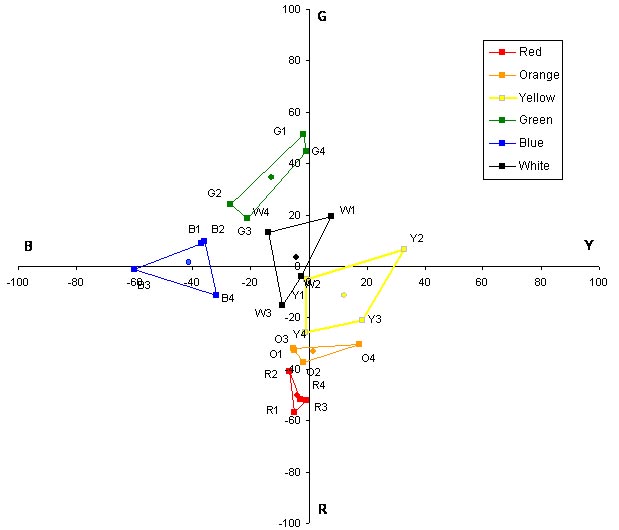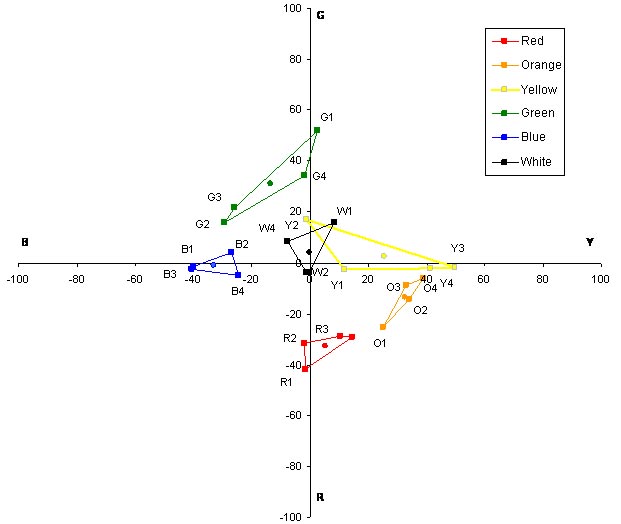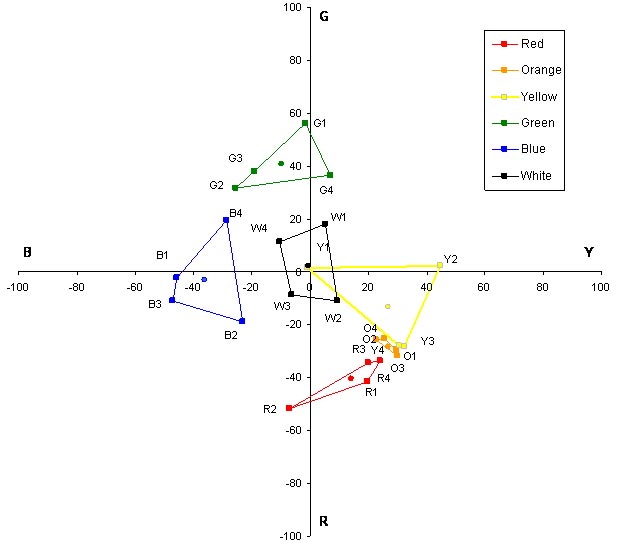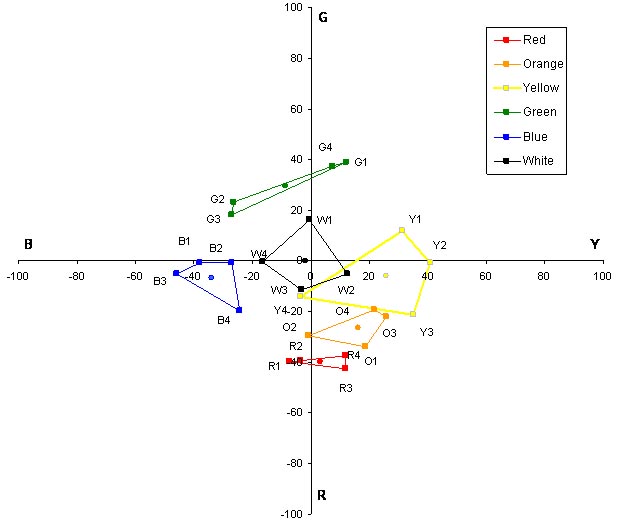U.S. Department of Transportation
Federal Highway Administration
1200 New Jersey Avenue, SE
Washington, DC 20590
202-366-4000
Federal Highway Administration Research and Technology
Coordinating, Developing, and Delivering Highway Transportation Innovations
| REPORT |
| This report is an archived publication and may contain dated technical, contact, and link information |
|
| Publication Number: FHWA-HRT-13-018 Date: April 2013 |
Publication Number: FHWA-HRT-13-018 Date: April 2013 |
 |
| Figure 31. Graph. Mean perceptual color ratings for type VIII sheeting for 17 participants. |
 |
| Figure 32. Graph. Mean color ratings for type VIII sheeting for participant 1. |
 |
| Figure 33. Graph. Mean color ratings for type VIII sheeting for participant 2. |
 |
| Figure 34. Graph. Mean color ratings for type VIII sheeting for participant 3. |
 |
| Figure 35. Graph. Mean color ratings for type VIII sheeting for participant 4. |
 |
| Figure 36. Graph. Mean color ratings for type VIII sheeting for participant 5. |
 |
| Figure 37. Graph. Mean color ratings for type VIII sheeting for participant 6. |
 |
| Figure 38. Graph. Mean color ratings for type VIII sheeting for participant 7. |
 |
| Figure 39. Graph. Mean color ratings for type VIII sheeting for participant 8. |
 |
| Figure 40. Graph. Mean color ratings for type VIII sheeting for participant 9. |
 |
| Figure 41. Graph. Mean color ratings for type VIII sheeting for participant 10. |
 |
| Figure 42. Graph. Mean color ratings for type VIII sheeting for participant 11. |
 |
| Figure 43. Graph. Mean color ratings for type VIII sheeting for participant 12. |
 |
| Figure 44. Graph. Mean color ratings for type VIII sheeting for participant 13. |
 |
| Figure 45. Graph. Mean color ratings for type VIII sheeting for participant 14. |
 |
| Figure 46. Graph. Mean color ratings for type VIII sheeting for participant 15. |
 |
| Figure 47. Graph. Mean color ratings for type VIII sheeting for participant 16. |
 |
| Figure 48. Graph. Mean color ratings for type VIII sheeting for participant 17. |